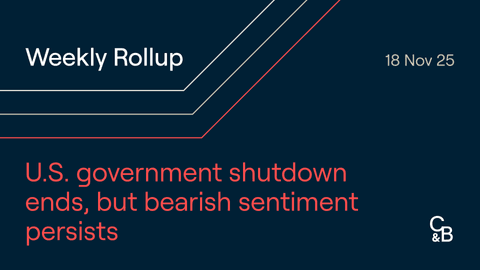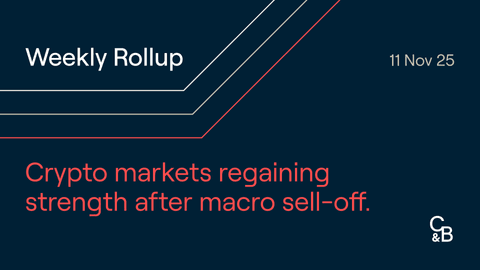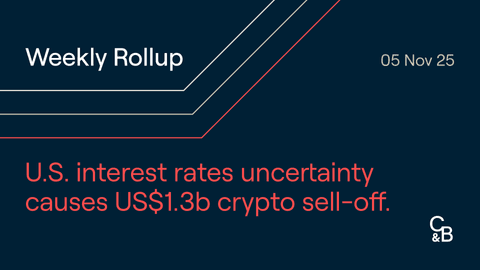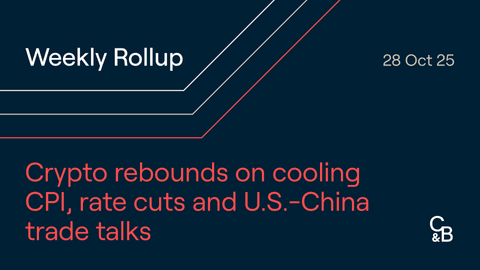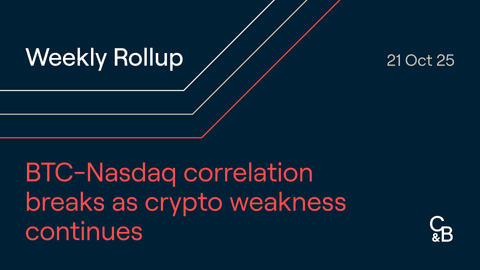Bitcoin
Bitcoin experienced a volatile second half of February with respect to price action. Bitcoin sold off from $45,000 on the 15th before marking the low of the month at $34,400. After spending most of the last few weeks ranging between $34,000 and $40,000, Bitcoin recently broke out of the range to the upside.
This month has been filled with market uncertainty. Inflation in the US has risen to a 40 year high of 7.5%. Geopolitical risks have also contributed to market uncertainty with Russia recently invading Ukraine. Taking these market factors into account as well as Bitcoin being viewed as a ‘risk on’ asset, its price has held up very well during this period. It has even managed to approach $46,000 earlier in the month (Feb 10th) and has almost returned to those levels at the time of writing.
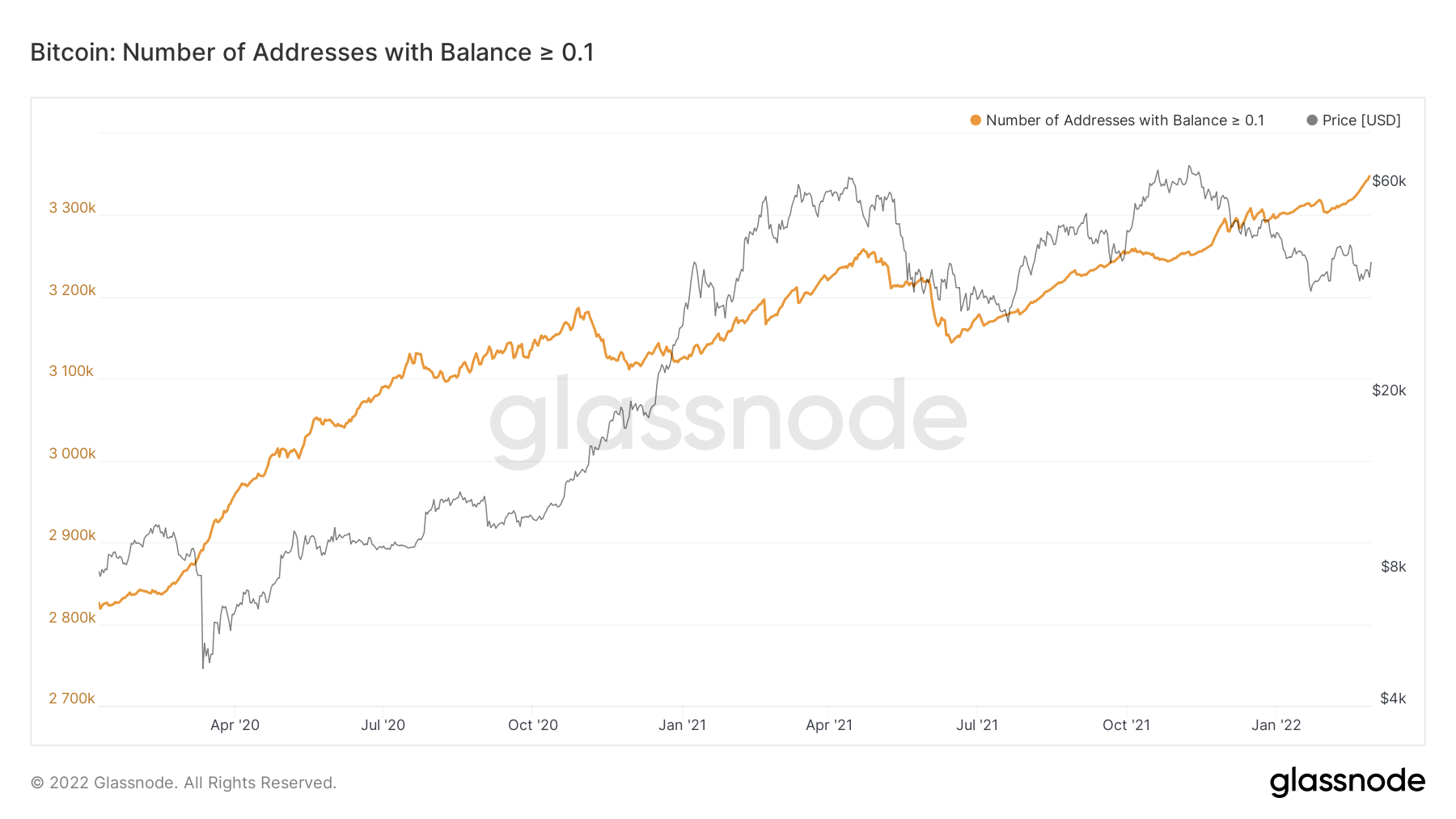
Some on-chain metrics indicate that smaller holders of Bitcoin (more than 0.1 but less than 1 Bitcoin) have continued to accumulate irrespective of the price action and market events within the last month. This indicates that retail investors remain unfazed by the current market conditions and the adoption of Bitcoin is only increasing.
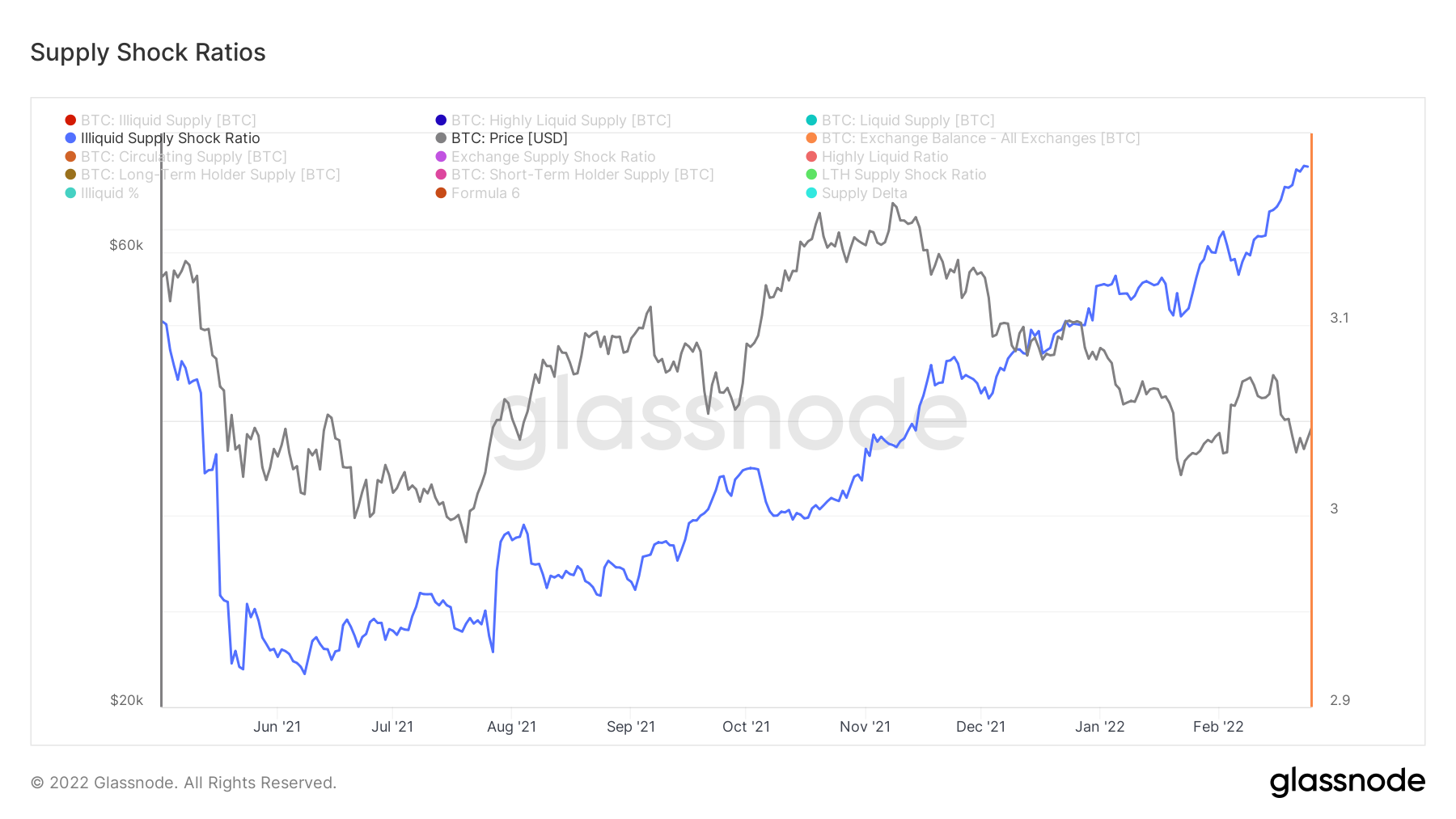
This accumulation can also be seen through exchange balances continuing to trend downwards since 2020. Supply has hit all-time lows on exchanges, reducing sell side pressure. Bitcoin has seen a recent surge in price arguably attributable to both an overall decrease in BTC supply and multiple catalysts driving increased demand, such as the potential flight of capital out from Russia.
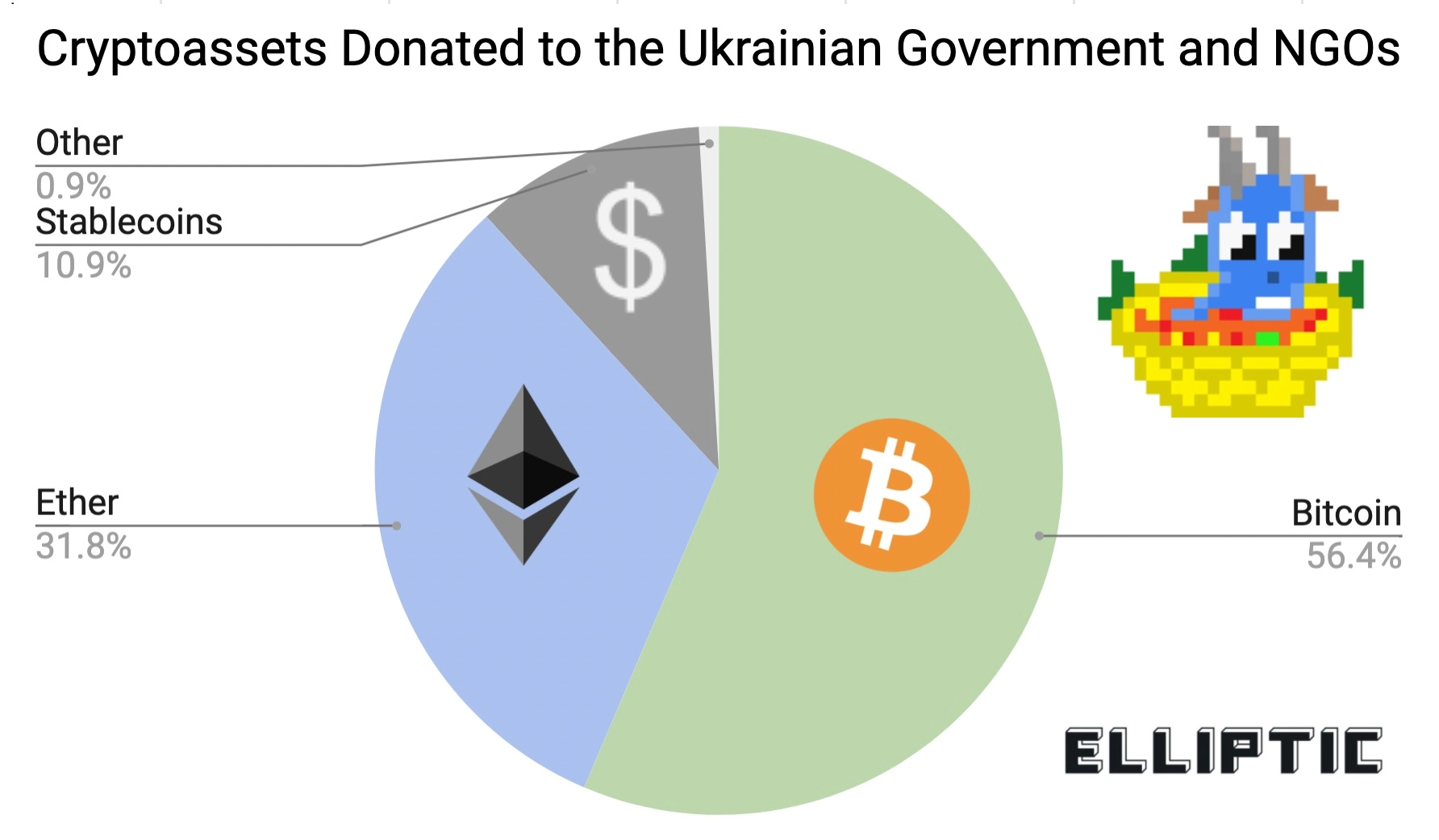
The crypto community came into the limelight as the Ukrainian government called for aid in the form of crypto donations by posting Ukrainian government wallet addresses on their official twitter handle. Many individuals on social media said their Ukrainian credit cards had stopped working and they were not able to withdraw money from their banks leaving some Ukrainians only able to access money through crypto infrastructure. In a mere three days, $17 million USD was raised without the need for traditional payment mechanisms. This is yet another display of the capabilities of cryptocurrencies.
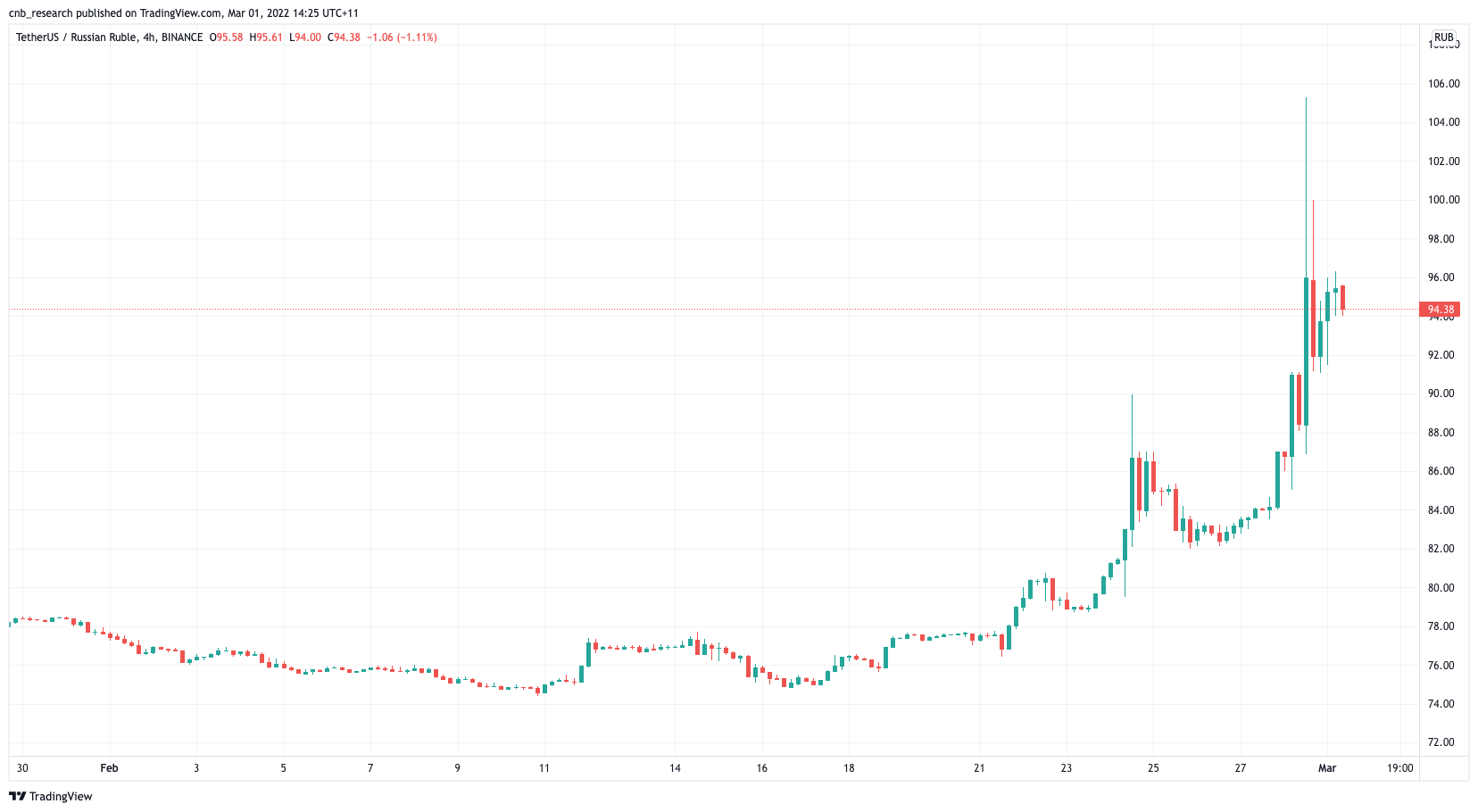
As an immediate countermeasure against the rising inflation of its fiat currency, the ruble, the Russian central bank more than doubled key interest rates on Monday, from 9.5% to 20%. These measures were implemented to stabilise the ruble, but were largely infective. Over the last few weeks, the ruble has declined around 30% against USDT. Sanctions and high inflation rates have forced many Russian ruble holders to exit their fiat currency into USD, USDT, or Bitcoin in order to preserve their wealth.
Ethereum
The performance of Ethereum (ETH) has fluctuated significantly throughout February. The first ten days of the month saw ETH exhibit positive price action where it rose by approximately 20% from $2,668 to $3,200.

However, ETH trended down until February 24th where it reached a monthly low just below the $2,400 level. To close the month, ETH rose back in price to approximately $2,900. Ethereum, like Bitcoin, has continued to increase in value during a very uncertain period.
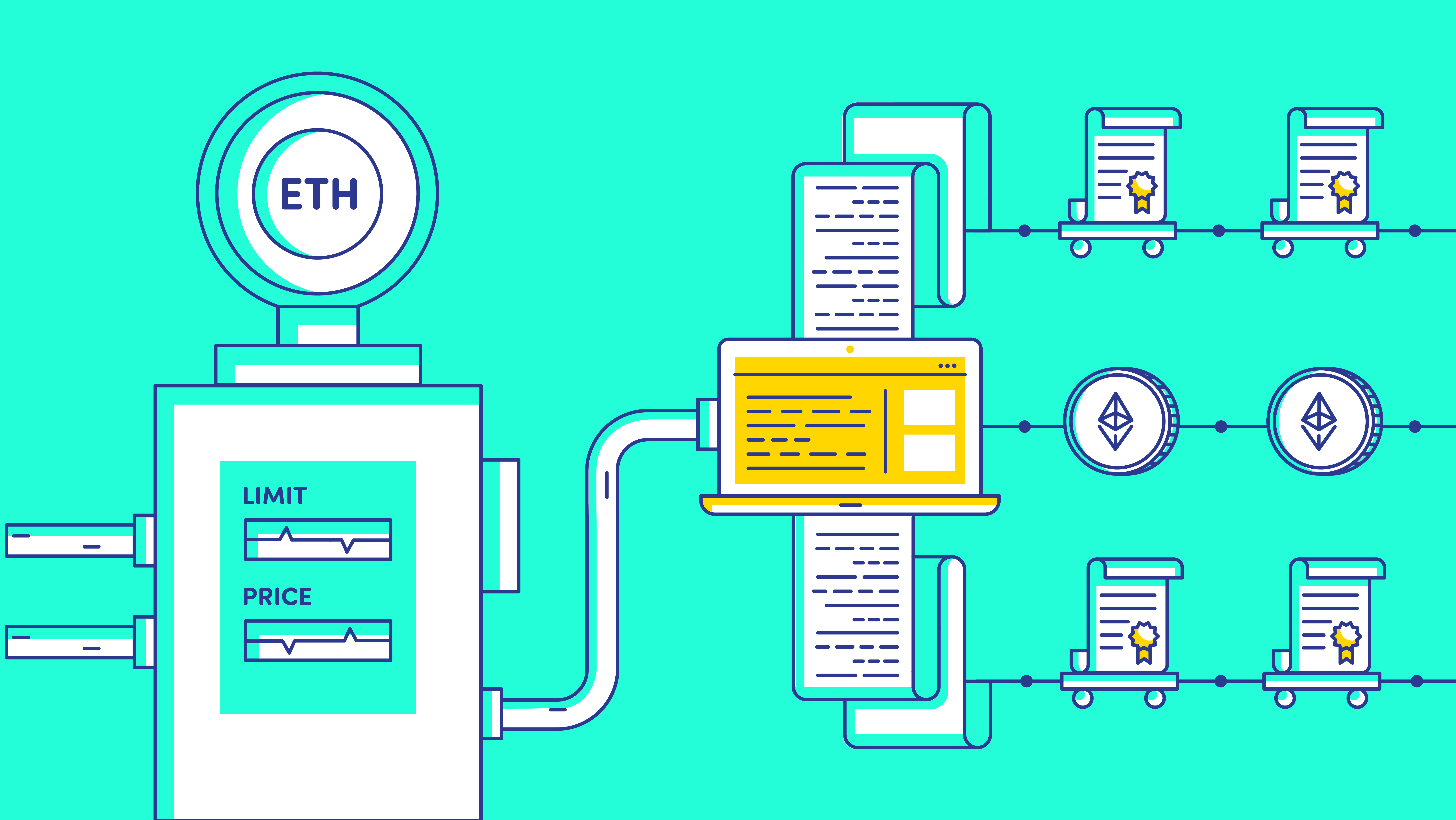
A talking point surrounding ETH during February was gas fees. ETH is widely known throughout the cryptocurrency space for having high gas fees. However, February saw gas fees fall to monthly lows. To be specific, ETH’s average transaction fees decreased by approximately 70% from the middle of January at $53 to around $14 by the middle of February. The potential downside here is that ETH’s total number of transactions also saw a decrease due to low activity levels on the ETH network. Despite this, ETH NFTs have continued to rise in popularity and gain mass media attention. For instance, a Mega MAYC was revealed by 0xb1 and AxelAple which garnered a lot of attention throughout crypto communities.
Altcoins
With the majority of altcoins trading in close synchrony with Bitcoin and Ethereum as they made their decline last week, Terra (LUNA) broke away from the pack. LUNA recently shared news about its $1 billion raise aimed at establishing a BTC reserve for Terra’s UST stablecoin. On the back of this announcement, LUNA has achieved an impressive gain of around 75% on the week.
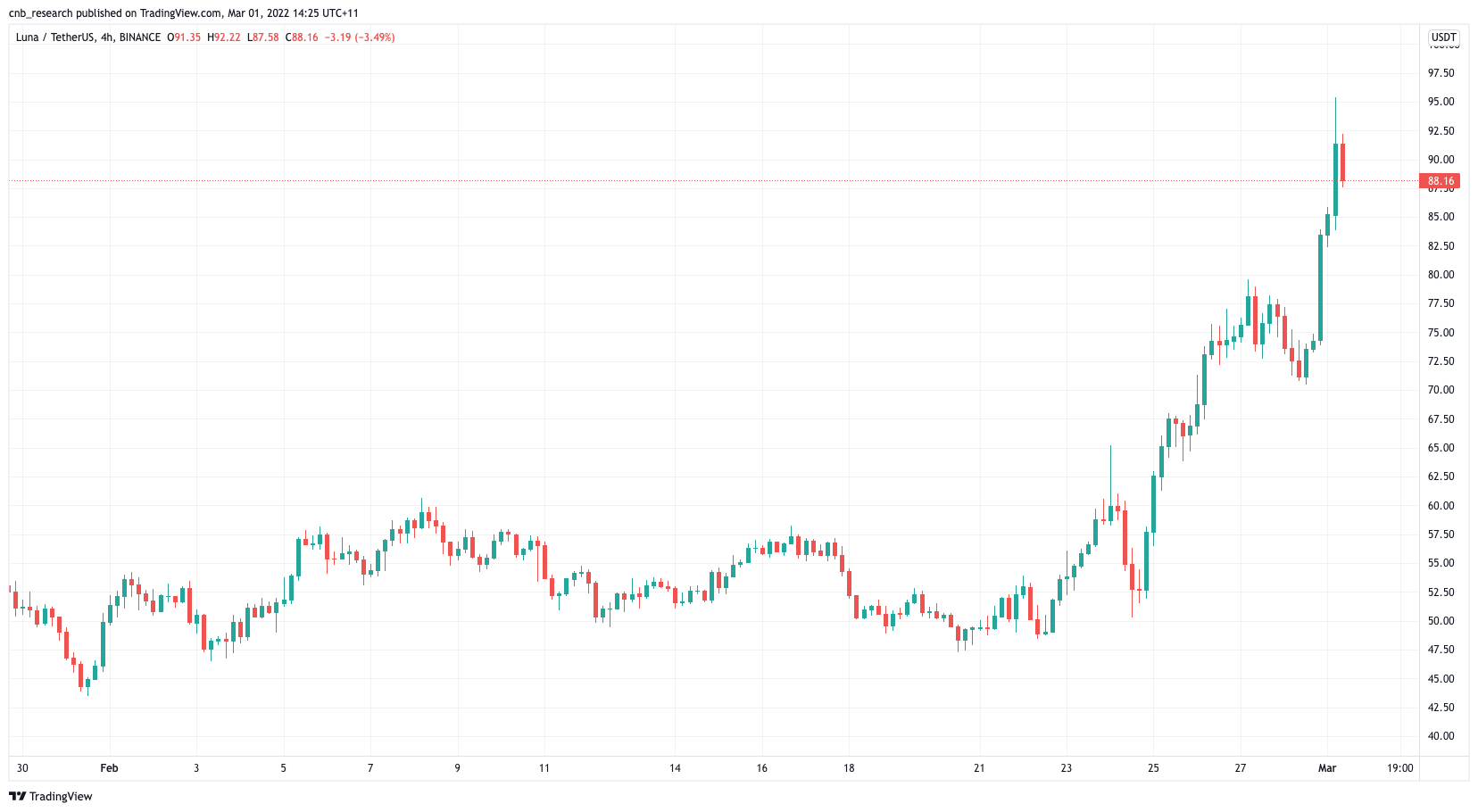
Other tokens have also enjoyed a modest bounce over the last week, including Cosmos (ATOM), Arweave (AR), Avalanche (AVAX), and Theta Network (THETA). These coins gained 33.5%, 30%, 24% and 23% respectively.
The table below shows the best and worst performing sectors over the past week:

Regulatory Updates
The conflict between the Ukrainian and Russian forces has put increased pressure on regulators to help guide the rest of the financial world through this difficult time. The Vice Prime Minister and Minister of Digital Transformation in Ukraine, Mykhailo Fedorov, has pushed for all cryptocurrency exchanges to freeze and block the addresses of Russian users. Since the request, a number of exchanges including Binance and Kraken have stated that they will not be banning any users unless they have a legal requirement to do so. A spokesperson from Binance stated, “We are not going to unilaterally freeze millions of innocent users' accounts”.
Related to the conflict in Ukraine, the EU Commission has announced plans to remove Russia from SWIFT messaging system. The move is expected to further limit Russia’s capacity to facilitate cross-border payments. While conflict in Ukraine has led to rapid sanctions involving traditional finance systems, commentators are pointing out the likelihood that crypto will be used to evade some of these sanctions. Separately, EU politicians have begun calling for a quicker passage into law of the Markets in Crypto-assets (MiCA) EU legislation, to ensure that crypto is not used to bypass sanctions.
Finally, the European Union has announced that they will be drafting regulations that could result in the ban of cryptocurrencies that use ‘proof of work’ as a consensus mechanism due to environmental concerns
Disclaimer: This assessment does not consider your personal circumstances, and should not be construed as financial, legal or investment advice. These thoughts are ours only and should only be taken as educational by the reader. Under no circumstances do we make recommendation or assurance towards the views expressed in the blog-post. Past performance is not a reliable indicator of future results. The Company disclaims all duties and liabilities, including liability for negligence, for any loss or damage which is suffered or incurred by any person acting on any information provided.
from Caleb & Brown Cryptocurrency Brokerage.


